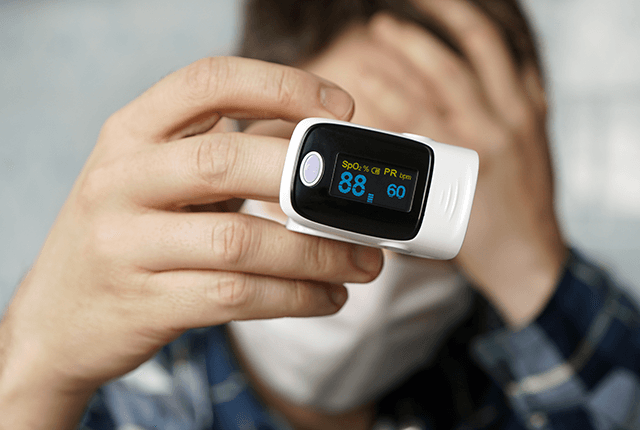How to Increase Blood Oxygen LevelThe amount of oxygen that is rotating in your blood is known as your blood oxygen level of the body (sometimes it is also known as blood oxygen saturation). Our bodies need a certain amount of oxygen to function properly since oxygen is very necessary for our body. When you breathe inside (inhale), oxygen enters your body through your mouth or by nose and travels through your lungs into your blood. After entering your bloodstream, oxygen travels to every cell in your body. Your body needs specific amount of energy to conduct all its essential functions, it includes digestion and even though, and all your cells require oxygen to produce energy effectively. Your cells produce carbon dioxide after utilising oxygen. The carbon dioxide is then returned to your lungs by your bloodstream when you exhale it through your mouth or by nose. 
The amount of oxygen saturation in your blood is circulated by your body since low blood oxygen levels (hypoxemia) can cause a variety of illnesses and dangerous harm to specific organ systems of body, particularly your brain and heart. Low blood oxygen levels are a sign that your circulatory system, lungs, or both may not be functioning properly. What is a blood oxygen level test?There are two methods for testing blood oxygen levels of body: a blood test and second one is pulse oximetry (using an oximeter). An oximeter only gives an extremely limited amount of information regarding your oxygen levels. Why do I need to have my blood oxygen level evaluated?If you have any of the following acute (sudden and serious) conditions, your doctor may ask you to get a blood oxygen level test:
If you have any of the following respiratory problems, your doctor may additionally conduct a blood oxygen test to make sure your medication is effective:
Your doctor will check your blood oxygen level if you are undergoing oxygen therapy while admitted to hospital to make sure that your body is getting proper amount of oxygen. How can I increase my blood oxygen level?The amount of oxygen in your blood can be increased naturally by so many ways included:
If you want to find out if these natural techniques to improve your oxygen intake are effective for you, you can monitor your blood oxygen level with a pulse oximeter at home. However, it is especially important to remember that these natural therapies might not be sufficient to raise your blood oxygen to a safe level if you have so much decline level of oxygen in your bloodstream, particularly in a serious disease like pneumonia or carbon monoxide poisoning. Who performs a blood oxygen level test?Blood is typically drawn from an artery in your wrist by a medical professional referred to as a respiratory therapist for arterial blood gas tests that measure blood oxygen levels. After that, the sample is either processed by the respiratory therapist or rapidly transferred to a lab where it is processed by medical laboratory specialists. A pulse oximeter can be used by any medical professional to measure your blood's oxygen saturation level.
Next TopicLow Blood Pressure Symptoms
|
 For Videos Join Our Youtube Channel: Join Now
For Videos Join Our Youtube Channel: Join Now
Feedback
- Send your Feedback to [email protected]
Help Others, Please Share









